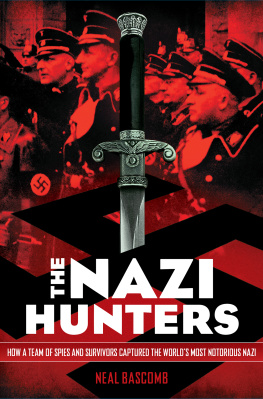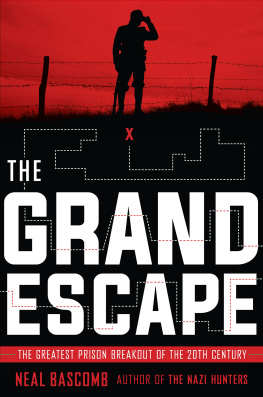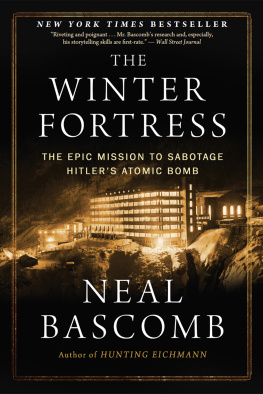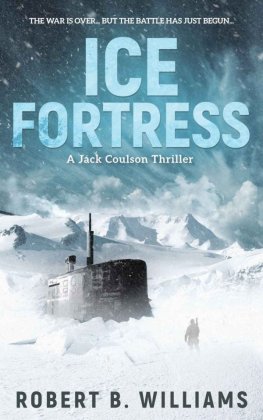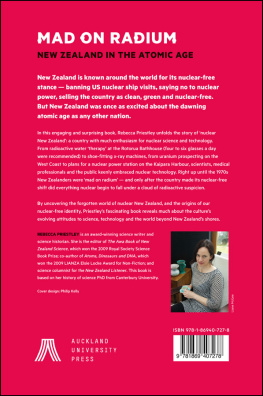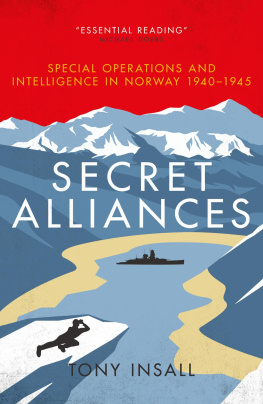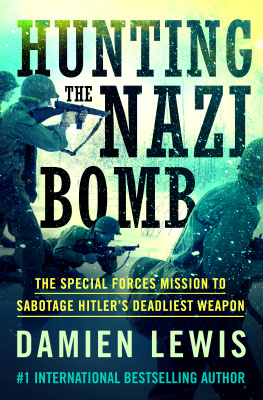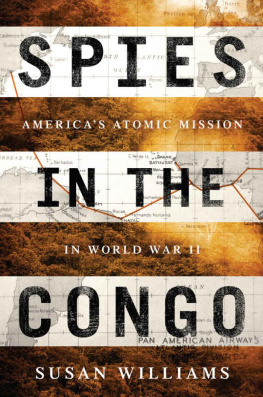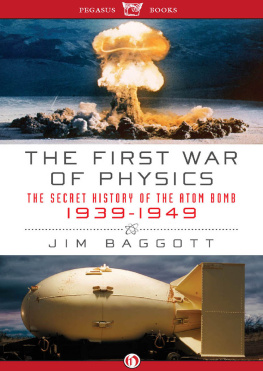Copyright 2016 by Neal Bascomb
All rights reserved
For information about permission to reproduce selections from this book, write to or to Permissions, Houghton Mifflin Harcourt Publishing Company, 3 Park Avenue, 19th Floor, New York, New York 10016.
www.hmhco.com
Library of Congress Cataloging-in-Publication Data
Names: Bascomb, Neal.
Title: The winter fortress : the epic mission to sabotage Hitlers atomic bomb / Neal Bascomb
Description: Boston : Houghton Mifflin Harcourt, 2016. | Includes bibliographical references and index. | Description based on print version record and CIP data provided by the publisher; resource not viewed.
Identifiers: LCCN 2015048287 (print) | LCN 2015042716 (ebook) | ISBN 9780544368064 (ebook) | ISBN 9780544368057 (hardcover)
Subjects: LCSH: World War, 19391945Commando operationsNorway. | World War, 19391945Underground movementsNorway. | SabotageNorwayHistory20th century. | Atomic bombGermanyHistory. | World War, 19391945GermanyTechnology.
Classification: LCC D 794.5 (print) | LCC D 794.5. B 373 2016 (ebook) | DDC 940.54/86481094828dc23
LC record available at http://lccn.loc.gov/2015048287
v1.0516
Cover design by Albert Tang
Cover photograph: Norsk Hydro ASA photo collection/Norsk Industriarbeidermuseum
All maps Svein Vetle Trae/Fossy; interior maps rendered by Jim McMahon/Scholastic. Map source notes: Knut Haukelid, Knut Lier-Hansen.
To those who brave the struggle
List of Participants
Operation Grouse/Swallow
Jens-Anton Poulsson, leader of Grouse
Knut Haugland, radio operator
Claus Helberg
Arne Kjelstrup
Einar Skinnarland
Operation Gunnerside
Joachim Rnneberg, leader of Gunnerside
Knut Haukelid, second in command
Birger Strmsheim
Fredrik Kayser
Kasper Idland
Hans Storhaug
D/F Hydro Sinking
Alf Larsen, engineer at Vemork
Knut Lier-Hansen, Milorg resistance fighter
Gunnar Syverstad, laboratory assistant at Vemork
Rolf Srlie, construction engineer at Vemork
Kjell Nielsen, transport manager at Vemork
Ditlev Diseth, Norsk Hydro pensioner
Norwegians
Leif Tronstad, scientist and Kompani Linge leader
Jomar Brun, chief engineer at Vemork
Torstein Skinnarland, brother of Einar
Olav Skogen, leader of local Rjukan Milorg
Lillian Syverstad, courier for Einar Skinnarland
Hamaren, Hovden, and Skindalen families, farmers who aided Skinnarland
Allies
Winston Churchill, prime minister of Great Britain
Franklin D. Roosevelt, president of the United States
Eric Welsh, head of the Norwegian branch of the British Secret Intelligence Service (SIS)
John Wilson, Norwegian section chief of British Special Operations Executive (SOE)
Wallace Akers, head of the Directorate of Tube Alloys
Mark Henniker, commanding officer of Operation Freshman
Owen Roane, American Air Force pilot
Nazis and Collaborators in Norway
Josef Terboven, Reichskommissar in Norway
General Nikolaus von Falkenhorst, head of German military forces in Norway
Lieutenant Colonel Heinrich Fehlis, head of the Gestapo and security forces in Norway
Captain Siegfried Fehmer, Gestapo bloodhound in Oslo
Second Lieutenant Muggenthaler, Fehliss SS official in Rjukan
Vidkun Quisling, leader of the Nasjonal Samling, Norwegian fascist party
German Scientists
Kurt Diebner
Werner Heisenberg
Paul Harteck
Abraham Esau
Walther Gerlach
You have to fight for your freedom and for peace. You have to fight for it every day, to keep it. Its like a glass boat; its easy to break. Its easy to lose.
JOACHIM RNNEBERG , Gunnerside leader
Prologue
Nazi-occupied Norway, February 27, 1943
In a staggered line, the nine saboteurs cut across the mountain slope. Instinct, more than the dim light of the moon, guided the young men. They threaded through the stands of pine and traversed down the sharp, uneven terrain, much of it pocked with empty hollows and thick drifts of snow. Dressed in white camouflage suits over their British Army uniforms, the men looked like phantoms haunting the woods. They moved as quietly as ghosts, the silence broken only by the swoosh of their skis and the occasional slap of a pole against an unseen branch. The warm, steady wind that blew through the Vestfjord Valley dampered even these sounds. It was the same wind that would eventually, they hoped, blow their tracks away.
A mile into the trek from their base hut, the woods became too dense and steep for them to continue by any means other than on foot. The young Norwegians unfastened their skis and hoisted them to their shoulders. It was still tough going. Carrying rucksacks filled with thirty-five pounds of gear, and armed with submachine guns, grenades, pistols, explosives, and knives, they waded, slid, and clambered their way down through the heavy, wet snow. Under the weight of their equipment they occasionally sank to their waists in the drifts. The darkness, thickening when the low clouds hid the moon, didnt help matters.
Finally the forest cleared. The men came onto the road that ran across the northern side of Vestfjord Valley toward Lake Ms to the west and the town of Rjukan a few miles to the east. Directly south, an eagles swoop over the precipitous Mna River gorge, stood Vemork, their target.
Despite the distance across the gorge and the wind singing in their ears, the commandos could hear the low hum of the hydroelectric plant. The power station and eight-story hydrogen plant in front of it were perched on a ledge overhanging the gorge. From there it was a six-hundred-foot drop to the Mna River, which snaked through the valley below. It was a valley so deep, the sun rarely reached its base.
Had Hitler not invaded Norway, had the Germans not seized control of the plant, Vemork would have been lit up like a beacon. But now, its windows were blacked out to deter nighttime raids by Allied bombers. Three sets of cables stretched across the valley to discourage low-flying air attacks during the day as well.
In dark silhouette, the plant looked an imposing fortress on an icy crag of rock. A single-lane suspension bridge provided the only point of entry for workers and vehicles, and it was closely guarded. Mines were scattered about the surrounding hillsides. Patrols frequently swept the grounds. Searchlights, sirens, machine-gun nests, and a troop barracks were also at the ready.


